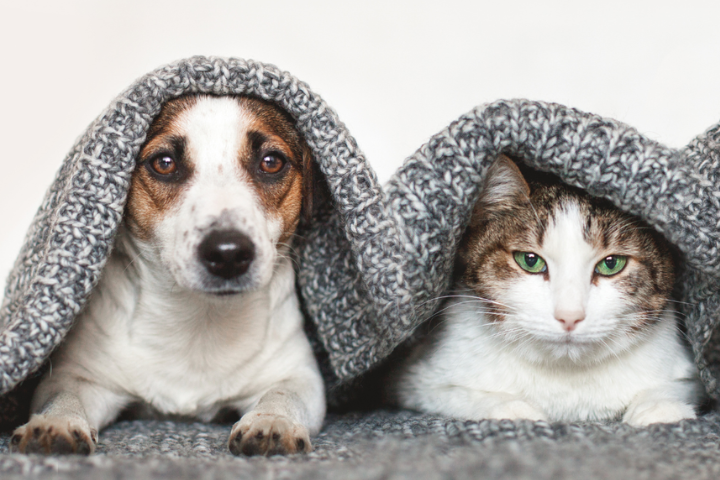Watching your pet during the cold winter months is imperative to ensure they are safe and sound. Heat-seeking behavior is a sign that your pet is getting too cold. Examples of this are shivering and trembling, even indoors. They may also cuddle in warm spaces or near heaters or fires, which can be dangerous as their skin may be burned or dry out. Keep reading for some winter safety tips to keep your pets safe during the colder months!
Keeping Your Pet Warm
- Pet sweaters aren’t just adorable; they’re also functional! Short-coated pets could use an extra layer of warmth when it’s cold outside. When looking for sweaters for furry friends, find ones without buttons that could come loose and be swallowed or have dangling cords. Finding the correct sweater size ensures your pet can breathe adequately.
- It is ideal to keep your pet inside during the winter months. Dogs should still be taken out for walks, but make sure that they are adequately insulated when they do so and that you wipe down their paws when they return inside. Rock salt and other chemicals used to prevent ice on sidewalks can irritate your pet’s feet. Wipe all paws with a damp towel before your pet licks them and irritates their mouth.
- When inside, provide your pets a warm place to sleep away from drafts, elevating their bed off cold floors and adding warm, soft bedding for them to sleep with, such as blankets and cushions.
- During winter, pets often need more energy to keep themselves warm, which means they may be hungrier than usual as they regulate their core body temperature. Their diet may also need to be adjusted to avoid winter weight gain if they are not exercising as much. Be sure to check with your vet about your pet’s winter nutritional needs to prevent overfeeding or underfeeding!
What To Do If Your Pet Gets Too Cold
Watching your pet during the cold winter months is imperative to ensure they are safe and sound. Heat-seeking behavior is a sign that your pet is getting too cold. Examples of this are shivering and trembling, even indoors. They may also cuddle in warm spaces or near heaters or fires, which can be dangerous as their skin may be burned or dry out.
If your pet is too cold, they will likely exhibit hypothermia signs. Here are some signs that your pet may be experiencing hypothermia:
- Increased heart rate, followed by a slow heart rate.
- Rapid breathing, followed by progressively slower and shallower breath.
- Sluggishness and delayed reflexes.
- Depression.
- Paleness.

